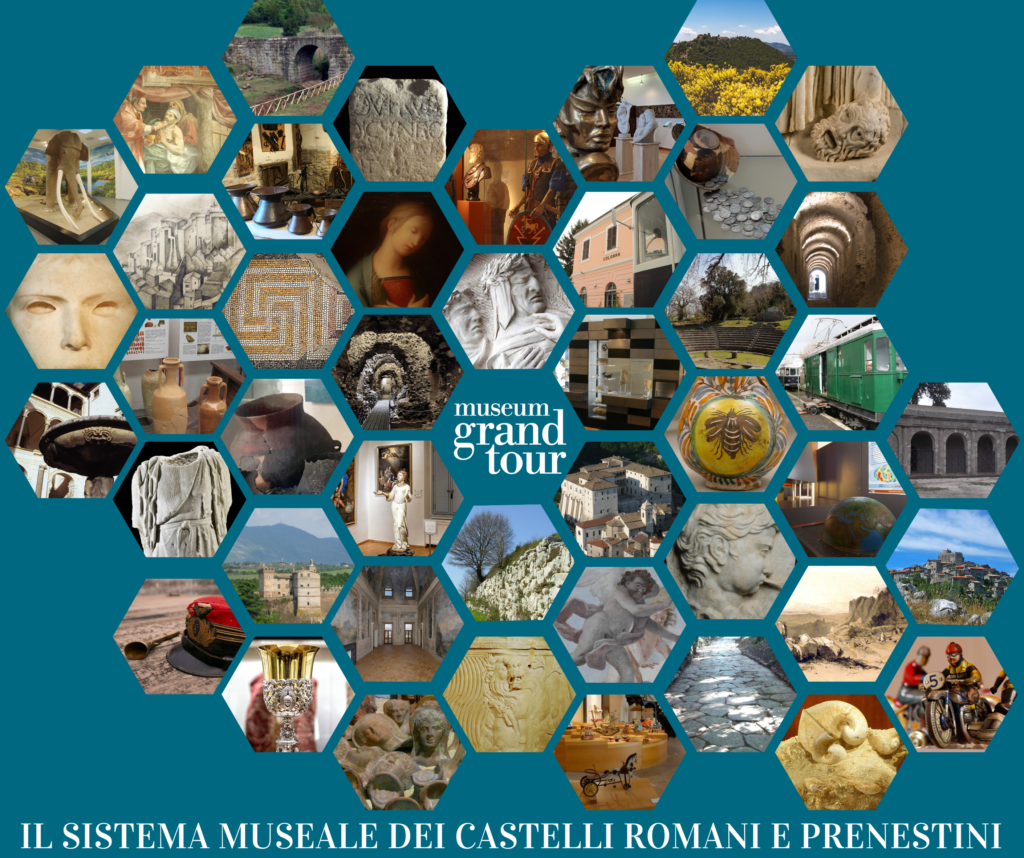The System
The Museum System of the Castelli Romani and Prenestini Museumgrandtour
was born in 2003 on the initiative of the Mountain Community of Castelli Romani and Prenestini through an agreement signed by the representatives of about ten municipalities, with the aim of networking their museums and creating a strategy of actions to promote an entire territory, with vast and heterogeneous.
The geographical area covered by the System has expanded considerably, and in recent years come to include a vast territory that goes beyond the Colli Albani and the Monti Prenestini to cover a large part of the upper Valle del Sacco and reach as far as the Province of Frosinone with the recent addition of the Civic Museum di Alatri. A situation, therefore, not dissimilar to the nearby capital city, but capable of asserting an identity of its own thanks to its attractions of great potential, the widespread wealth of its cultural heritage, and the fascination of its landscape which still preserves its singular beauty, made extraordinary by those historical, monumental and archaeological stratifications that over time have transformed it into a true unicum.

The geographical area covered by the System has expanded considerably, and in recent years come to include a vast territory that goes beyond the Colli Albani and the Monti Prenestini to cover a large part of the upper Valle del Sacco and reach as far as the Province of Frosinone with the recent addition of the Civic Museum di Alatri. A situation, therefore, not dissimilar to the nearby capital city, but capable of asserting an identity of its own thanks to its attractions of great potential, the widespread wealth of its cultural heritage, and the fascination of its landscape which still preserves its singular beauty, made extraordinary by those historical, monumental and archaeological stratifications that over time have transformed it into a true unicum.
The territory of the System is historically characterized by a common Latin background. In fact, the cities of Praeneste, Gabii, Labicum, Tusculum, Velitrae, Lanuvium and some of the most important sanctuaries of Antiquity were situated here: Juno Sospita, Diana Nemorense, Jupiter on Monte Albano and Fortuna Primigenia. The Roman nobilitas also favored these places thanks to the pleasant climate and the beauty of the landscape. During the Renaissance and Baroque eras, the rich papal aristocracy chose these views of the Campagna Romana to construct scenic summer residences designed and decorated by the great artists of the time. From the end of the 16th century onwards, the beauty and charm of the area made these places a privileged stop on the so-called Grand Tour, the educational journey that scholars, artists, collectors and young representatives of the European aristocracy undertook across the continent to complete their intellectual education, profoundly rooted in ancient times.
Immersion in a landscape which provides a backdrop to archaeological finds; descriptions of shrubs and roots among the remains of antiquity resulting in a unique symbiosis between art and nature; and glimpses of lake pools steeped in mythological legends are just some of the literary and figurative references that Grand Tour travellers have recorded in their works, leaving indelible memories of these places for us modern travellers.




